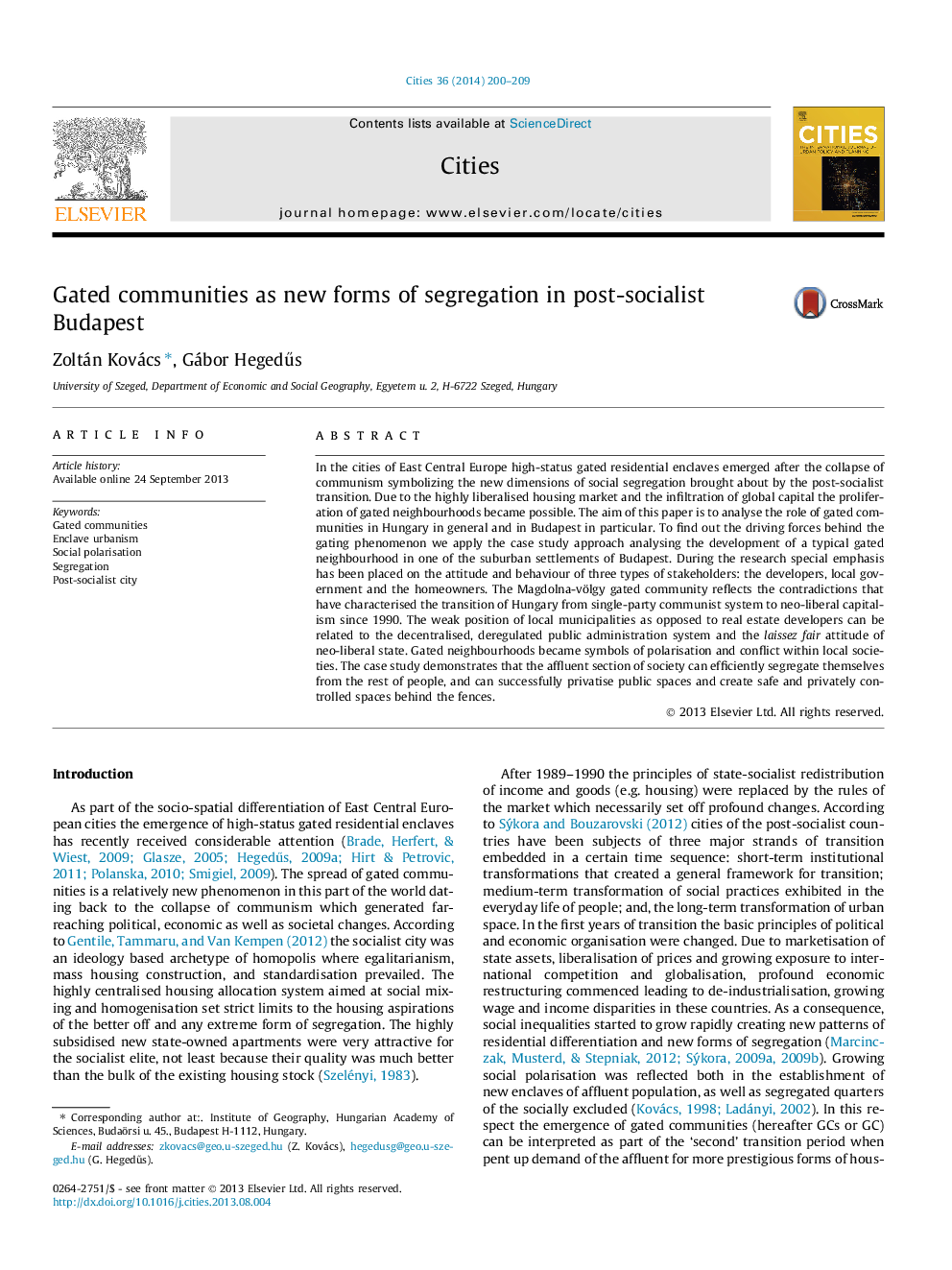| Article ID | Journal | Published Year | Pages | File Type |
|---|---|---|---|---|
| 1008383 | Cities | 2014 | 10 Pages |
•Gated communities (GCs) in post-socialist cities are imprints of globalisation and socio-spatial differentiation.•High-income GCs were first developed at inner-city locations and later in suburbs.•The withdrawal of state and dismantling of previous planning control played an important role in the development of GCs.•Residents move to GCs mostly because of prestige, social homogeneity and the quality of the environment.•The production of GCs substantially contributes to the heteropolitanisation process of post-socialist cities.
In the cities of East Central Europe high-status gated residential enclaves emerged after the collapse of communism symbolizing the new dimensions of social segregation brought about by the post-socialist transition. Due to the highly liberalised housing market and the infiltration of global capital the proliferation of gated neighbourhoods became possible. The aim of this paper is to analyse the role of gated communities in Hungary in general and in Budapest in particular. To find out the driving forces behind the gating phenomenon we apply the case study approach analysing the development of a typical gated neighbourhood in one of the suburban settlements of Budapest. During the research special emphasis has been placed on the attitude and behaviour of three types of stakeholders: the developers, local government and the homeowners. The Magdolna-völgy gated community reflects the contradictions that have characterised the transition of Hungary from single-party communist system to neo-liberal capitalism since 1990. The weak position of local municipalities as opposed to real estate developers can be related to the decentralised, deregulated public administration system and the laissez fair attitude of neo-liberal state. Gated neighbourhoods became symbols of polarisation and conflict within local societies. The case study demonstrates that the affluent section of society can efficiently segregate themselves from the rest of people, and can successfully privatise public spaces and create safe and privately controlled spaces behind the fences.
